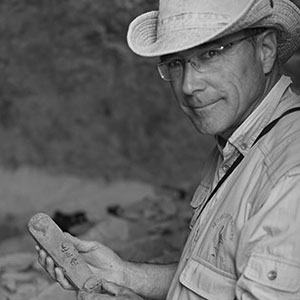
Djehuty Project: 20 years of archaeological excavations in Luxor, Egypt
The main objective of the Djehuty Project is the excavation, restoration, scientific publication and dissemination of a group of funerary monuments and burials, on the hill of Dra Abu el-Naga, at the northern end of the necropolis of the ancient city of Thebes, today Luxor. The Djehuty Project, digging outside, has asked itself questions to find out how space was occupied over time, how the location of the tomb was chosen, how a tomb relates to those previously built in the area and, in turn, how this influenced the location of other later tombs, how tombs located on higher levels of the hill were circulated and accessed, etc. On the outside of the tombs you can find archaeological evidence of the offerings made and the rituals carried out in honor of the deceased and the paths laid out.

Period
The tombs, chapels and material culture range from the end of the Ancient Kingdom, ca. 2200 B.C., to Roman times, although the area remained inhabited and used in Byzantine and Islamic times, until the presen
Institution
Consejo Superior de Investigaciones Científicas -Instituto de Lenguas y Culturas del Mediterráneo y Oriente Próximo
Web and social networks
Location
PRINCIPAL RESEARCHERS

José Manuel Galán, director of the Djehuty Project Research
Professor at the Centro de Ciencias Humanas y Sociales del CSIC
Born in Madrid in 1963, he studied Ancient History at the Universidad Complutense in Madrid, graduating in 1986, and the following year he went to the United States to study Egyptology, thanks to a scholarship granted by Johns Hopkins University (Baltimore), where he studied for six years with professors Hans Goedicke and Betsy Bryan, among others, and received his doctorate in June 1993. There he studied for six years with professors Hans Goedicke and Betsy Bryan among others, obtaining his doctorate in June 1993, and
in 1994 he was awarded a postdoctoral Alexander von Humboldt research grant at the Ägyptologisches Institut of the University of Tübingen (Germany).
In January 1995 he joined the Consejo Superior de Investigaciones Científicas (Madrid) as a “contract researcher”, attached to the Instituto de Filología. In 2000 he won the competitive examination to become a Senior Scientist at the CSIC.
His doctoral thesis was published in 1995 in the German series of monographs on Egyptology Hildesheimer Ägyptologische Beiträge, with the title “Victory and Border: Terminology related to Egyptian Imperialism in the XVIIIth Dynasty”.
In Spanish, he has published the books “Cuatro Viajes en la Literatura del Antiguo Egipto”, CSIC, Madrid, 1998 (2nd ed. revised in 2000), and “El imperio egipcio: Inscripciones (ca. 1550-1300 a. C.)”, Trotta, Madrid, 2002. The Seminar for Egyptology and Coptology of the University of Göttingen published in 2005 “Four Journeys in Ancient Egyptian Literature” (Lingua Aegyptia ¬ Studia monographica 5). He has published the book “En busca de Djehuty: crónica de una excavación arqueológica en Luxor”, National Geographic-RBA, Barcelona, 2006, about the behind-the-scenes of the Djehuty Project, the development of the research and the first four archaeological campaigns.
He is the author of about fifty research articles, published in international journals, such as: Journal of Egyptian Archaeology (London), Journal of Near Eastern Studies (Chicago), Chronique d’Égypte (Brussels), Zeitschrift für Ägyptische Sprache (Leipzig-Berlin), Studien zür altägyptischen Kultur (Hamburg), etc.
RESULTS
- In the last archaeological campaign we found the first testimonies of the Ancient Kingdom, ca. 2200 B.C., in our site. Fragments of a “Meidum bowl” that advance the use of this area of the necropolis by two centuries.
- The chapel tombs of Djehuty and Hery (TT 11-12), built between 1520 and 1470 B.C., have their walls entirely decorated with inscriptions and scenes in relief, both religious and funerary, as well as civil; the latter inform us about their families and their administrative career.
- From a later period, we discovered the tomb of the overseer of the weavers, Ramose, who served under Ramses II, ca. 1200 BC.
- The latest significant finding of impact among the scientific community and the general public, which occurred in 2017, consists of a funeral garden, discovered at the entrance of a large tomb from 2000 BC. The garden preserved the seeds of plants that grew there 4,000 years ago, as well as the trunk of a small tamarisk still standing in a corner of the garden. After protecting it with a metal structure and insulating plates, we made an exact replica that was placed just above the original.
- Proof of the uniqueness and value of some of the findings is the fact that seven sets of pieces are on display at the Luxor Museum
1- Linen cloth with the date of its production written in red ink, mentioning the year 2 of the reign of Amenhotep II, ca. 1450 B.C.
2- The “Table of the Apprentice”, a stuccoed wooden board, used by a beginner scribe ca. 1470 B.C.
3- Sample of part of the set of fifty bouquets (dried) used in a funeral ca. 1000 B.C., and found together with fifty vases.
4- Intact burial of Iqer, ca. 2000 B.C., including his red inscribed coffin, walking sticks, bows, arrows and pottery used in the ritual of the deceased’s farewell.
5- Set of seven gold earrings found at the entrance of the burial chamber of Djehuty, ca. 1470 B.C.
6- Anthropomorphic and polychrome coffin, type “rishi”, of a character called Neb, ca. 1600 B.C.
7- Set of models/mummy models (shabtis) wrapped in linen and inscribed with the name of the “Son of King Ahmose”, together with their wooden coffin
PICTURES
- Oldest Human Fingerprint in the World Discovered in Spain, Left by Neanderthals 43,000 Years Ago (La Brújula Verde 26/05/2025) - 27 May, 2025
- Precise Timeline Reconstructed for When Denisovans, Neanderthals, and Homo sapiens Inhabited Denisova Cave Over 300,000 Years (La Brújula Verde 26/05/2025) - 27 May, 2025
- Mysterious Syrian artifacts reidentified as ancient baby rattles (Phys.org 26/05/2025) - 27 May, 2025










